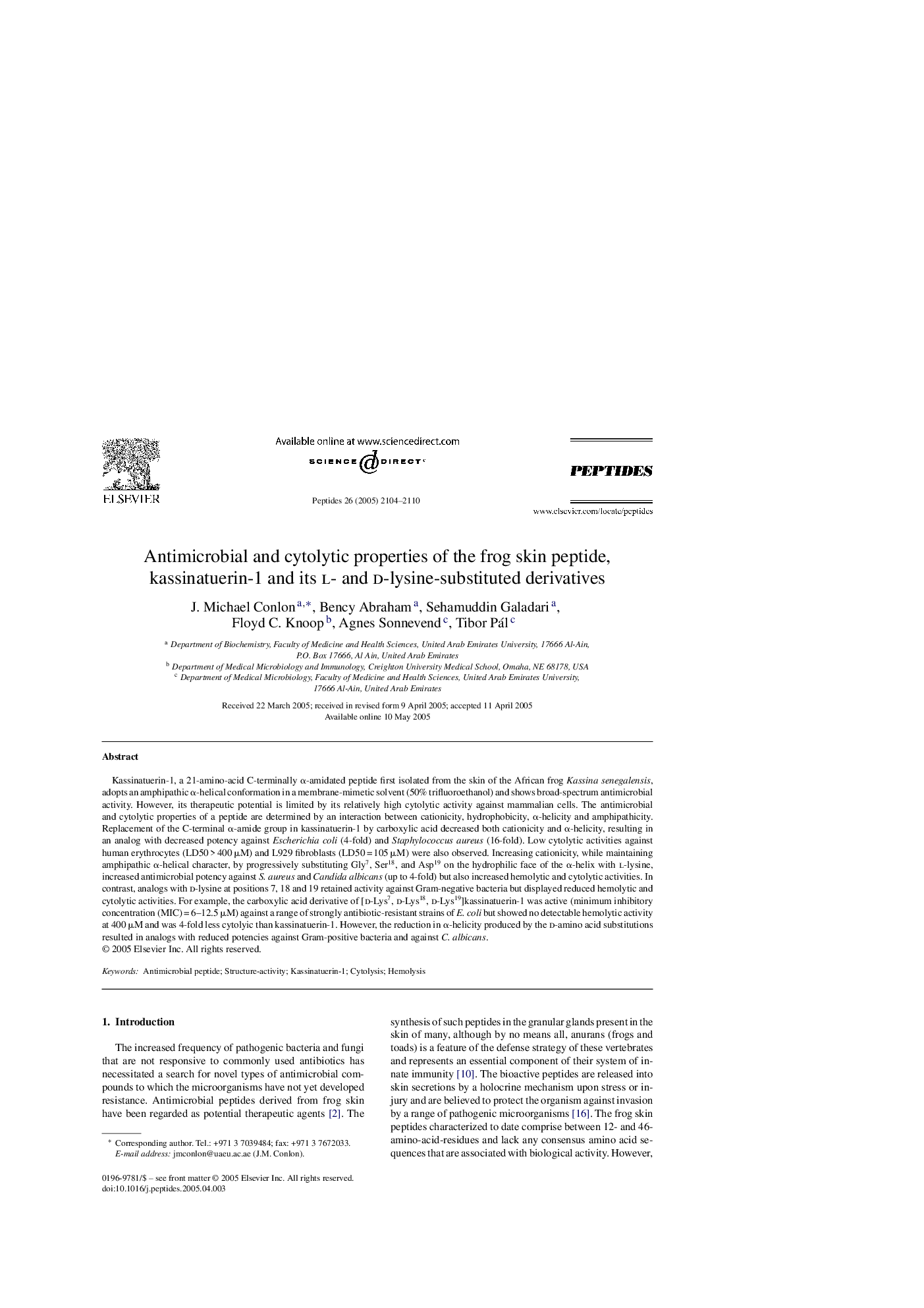| Article ID | Journal | Published Year | Pages | File Type |
|---|---|---|---|---|
| 2008768 | Peptides | 2005 | 7 Pages |
Abstract
Kassinatuerin-1, a 21-amino-acid C-terminally α-amidated peptide first isolated from the skin of the African frog Kassina senegalensis, adopts an amphipathic α-helical conformation in a membrane-mimetic solvent (50% trifluoroethanol) and shows broad-spectrum antimicrobial activity. However, its therapeutic potential is limited by its relatively high cytolytic activity against mammalian cells. The antimicrobial and cytolytic properties of a peptide are determined by an interaction between cationicity, hydrophobicity, α-helicity and amphipathicity. Replacement of the C-terminal α-amide group in kassinatuerin-1 by carboxylic acid decreased both cationicity and α-helicity, resulting in an analog with decreased potency against Escherichia coli (4-fold) and Staphylococcus aureus (16-fold). Low cytolytic activities against human erythrocytes (LD50 > 400 μM) and L929 fibroblasts (LD50 = 105 μM) were also observed. Increasing cationicity, while maintaining amphipathic α-helical character, by progressively substituting Gly7, Ser18, and Asp19 on the hydrophilic face of the α-helix with l-lysine, increased antimicrobial potency against S. aureus and Candida albicans (up to 4-fold) but also increased hemolytic and cytolytic activities. In contrast, analogs with d-lysine at positions 7, 18 and 19 retained activity against Gram-negative bacteria but displayed reduced hemolytic and cytolytic activities. For example, the carboxylic acid derivative of [d-Lys7, d-Lys18, d-Lys19]kassinatuerin-1 was active (minimum inhibitory concentration (MIC) = 6-12.5 μM) against a range of strongly antibiotic-resistant strains of E. coli but showed no detectable hemolytic activity at 400 μM and was 4-fold less cytolyic than kassinatuerin-1. However, the reduction in α-helicity produced by the d-amino acid substitutions resulted in analogs with reduced potencies against Gram-positive bacteria and against C. albicans.
Related Topics
Life Sciences
Biochemistry, Genetics and Molecular Biology
Biochemistry
Authors
J. Michael Conlon, Bency Abraham, Sehamuddin Galadari, Floyd C. Knoop, Agnes Sonnevend, Tibor Pál,
